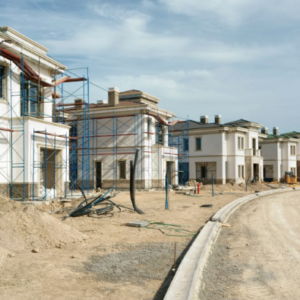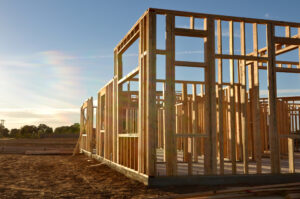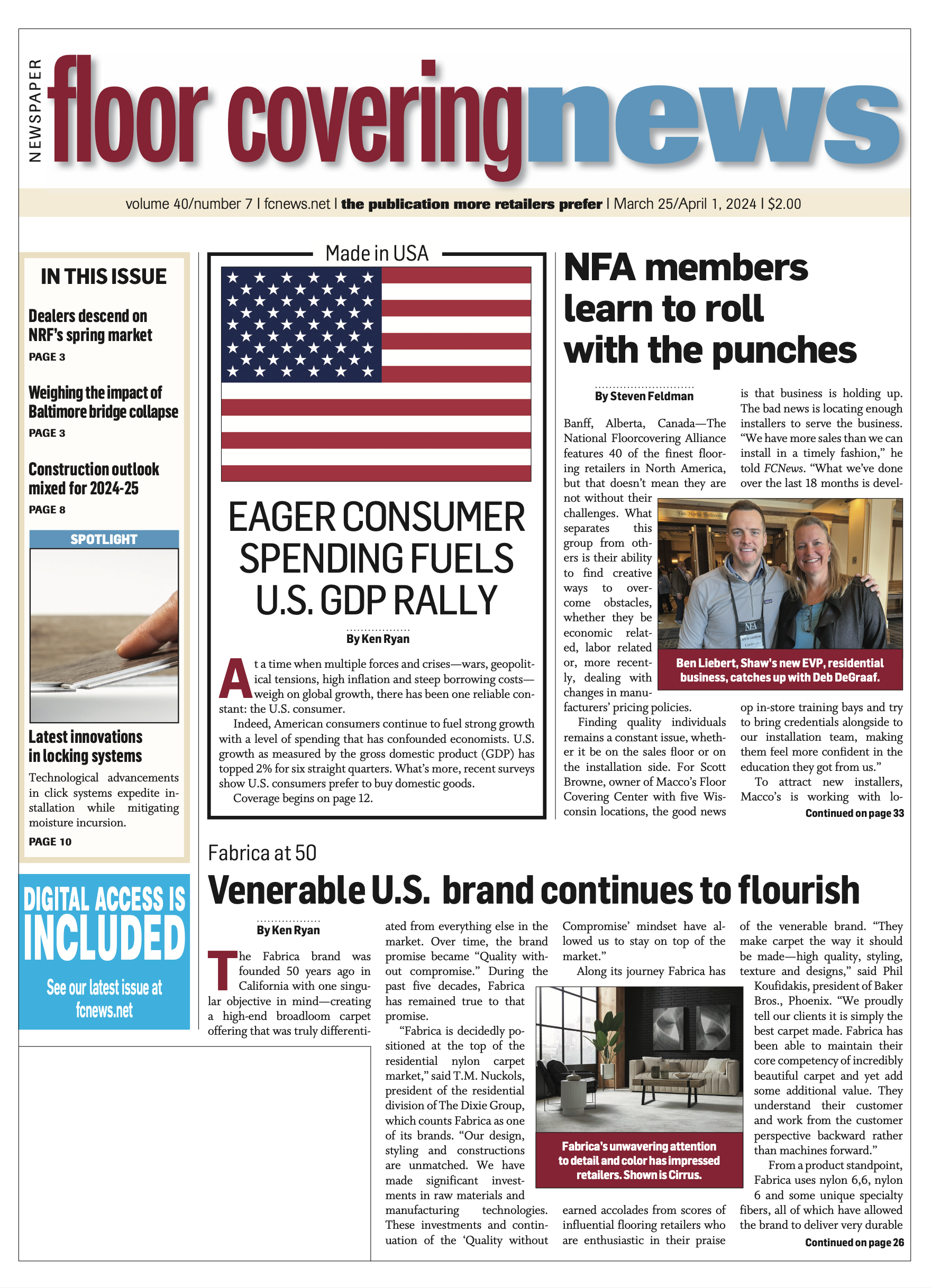 Phoenix—Uncertainty surrounding interest rates will continue to frustrate those heavily leveraged in the new home construction market, while those focused on residential replacement remodeling stand to gain from both buyers and sellers staying put. In the non-residential market, certain sectors will fare better than others as workforce trends dictate the use of office space and increased spending on leisure travel buoy hospitality, entertainment and retail markets.
Phoenix—Uncertainty surrounding interest rates will continue to frustrate those heavily leveraged in the new home construction market, while those focused on residential replacement remodeling stand to gain from both buyers and sellers staying put. In the non-residential market, certain sectors will fare better than others as workforce trends dictate the use of office space and increased spending on leisure travel buoy hospitality, entertainment and retail markets.
Those were just some of the main findings of a wide-ranging keynote presentation delivered by Lauren Saidel-Baker, economist with ITR Economics, in her address to commercial flooring contractors in attendance at the recent Fuse Alliance conference here earlier this month.
Following are excerpts of her presentation.
 Housing pulse
Housing pulse
The latest research from ITR Economics shows there’s reason to be optimistic about the long-term outlook for the U.S. housing market—at least in terms of single-family housing starts, anyway. While the month-over-month movement has slowed, year-over-year activity for the past three months is actually up—significantly, in fact. That’s
a signal, the firm said, that the worst of this cycle could be over. “Our data regarding single-unit housing starts indicate this segment has already moved through its downside,” Saidel-Baker told attendees. “We’ve already had our recession in housing starts, and now we’re on the recovery side of things.”
Hovering at just under 1 million units on an annualized basis, single-family housing starts are certainly off from their pre-pandemic norms. But ITR expects to see the tide beginning to turn in the not-too-distant future. “We’re now on the right side of things and, in fact, very shortly we’ll move back into positive growth territory,” Saidel-Baker said. “Growth will be a little bit muted this year, but it will be positive through late ’24, ’25 and ’26.”
ITR Economics is basing this optimistic outlook, in part, on what the firm is seeing with respect to building-permit filings for single-family units. As permits move, so go housing starts (eventually), the reasoning goes. “Permits move before starts; that’s a leading indicator,” Saidel-Baker noted. “You have to pull the permit before you break ground and start dig- ging the foundation.”
While ITR research shows the number of permits issued are still below last year’s levels, movement is beginning to trend upward. “That number is getting less and less negative,” Saidel-Baker stated. “Most of the country is in a recovery position. The good news is some states are in outright growth mode, with a heavy correlation to those high-population areas.”
The outlook for the multifamily side of the business, however, is not as favorable. Unlike the trajectory of the single-family housing market, activity in this sector of the market indicates things could get slightly worse before they eventually improve. “We still haven’t hit the trough of this cycle on multi-unit construction,” Saidel-Baker noted. “As of this moment, the number of new multifamily units started is down about 16% from this time last year.”
That’s not to say that there aren’t regional pockets of multifamily activity. In illustration, Saidel-Baker pointed to markets such as Oklahoma, Kansas and Maine. “We’re seeing some real hot spots there,” she noted. “Even here in Arizona, which is still growing. There’s still a lot of demand.”
 Pricing trends
Pricing trends
The current state of the housing market is closely tied to high interest rates and low inventories. These factors have especially impacted the price of both new and existing homes across the country. It’s the classic supply-and-demand scenario that’s further complicated by mitigating market dynamics.
“We saw a severe contraction in the housing market in recent years due mainly to affordability—or lack thereof,” Saidel-Baker noted. “When interest rates went up, home prices went up. But now we’re starting to see a little bit of easing in some of those trends. Housing, of course, is largely regional but on average we’ve started to see a little bit of pullback in housing prices. It looks like we maybe overshot the peak at the worst of the pandemic, when houses were going for cash, they were going for heavy over asking price. Now we’re seeing a little bit of cooling.”
According to ITR Re- search, interest rates on a 30-year mortgage were at a 20-year high just a few months ago. Today they’re hovering around 7.2%. That kept potential buyers on the sidelines, while preventing sellers from upgrading (or downsizing) into new homes. Builders, as a result, scaled back on new projects, thereby stifling inventory.
Recent mortgage application activity, however, indicates some buyers might be stepping off the sidelines and into the arena. “We’re starting to come to terms with the fact that the rates aren’t going back to where they were anytime soon,” Saidel-Baker noted. “Homebuyers are saying: ‘So, if I really do need to move, I’m going to bite the bullet and take that high mortgage rate. I just have to buy that new house.’ That, in turn, is starting to spur new construction activity.”
What’s making that higher interest rate pill easier to swallow, Saidel-Baker noted, is a commensurate rise in worker pay. “In studying the labor market, we’re seeing much higher wage gains,” she noted. “That means our average annual earnings are starting to pick back up. The difference in the gap between average annual earnings and what you should be earning to afford an average mortgage payment is narrowing.”
 Commercial construction
Commercial construction
The interplay between residential and non-residential construction has typically been described as a seesaw; when one market rises, the other descends—and vice versa. Seldom are the two in lockstep. Industry experts say the pandemic years may have slightly altered that normally reliable formula in that work already in the pipeline continued apace while offices, schools and other venues were temporarily closed.
Fast forward to 2024, commercial construction is still humming along in certain end-use sectors of the market. “Today, non-residential construction spending is up over 20% from this time last year,” Saidel-Baker said. “It just feels like this market is going gangbusters. However, that trend won’t last indefinitely. I expect cooling for the rest of this year and a mild pullback in 2025.”
That projected pullback, according to ITR, will be the result of credit tightening in financial markets. “When banks tighten their credit standards, that tends to have a suppressive effect on new activity going forward,” Saidel-Baker stated.
Of course, some non-residential sectors will fare better than others. ITR’s research shows healthy activity in applications such as apartment buildings, re- tail spaces and industrial/manufacturing facilities. Saidel-Baker attributes that trend, in large measure, to increased investment in stateside manufacturing—a.k.a. “onshoring” or reshoring. “With domestic production you’re not shipping through the Red Sea or the Panama Canal, [so as a result] we’re seeing huge demand for new warehouses and distribution facilities. That, in turn, is driving huge growth in both manufacturing and construction.”
Ditto for warehouse construction. “We, as consumers, all want our free, two-day shipping, so we’re building those huge distribution centers,” she said. “This is a long-term trend, and it’s bringing a lot of that attention back to these U.S. markets.”
ITR Economics said it is also seeing strength in the education market, with 12% growth in construction across this bellwether sector. “A lot of that focus has been on upper, higher-level education such as colleges and universities,” Saidel-Baker said. In that same vein, the firm is seeing increased investment in hospital construction spending. “We all finally went back to the doctor post-COVID-19, so hospitals are still feeling that growth rate.”
The same can’t be said for the office/corporate sector, however. “Here, again, it matters where you are, but obviously, office vacancy rates are elevated compared to the long-term average,” she explained. “We just still haven’t gone back to the office in full force as we had been pre-pandemic.”

